Vandana Vishwas | Monologues (self-released)
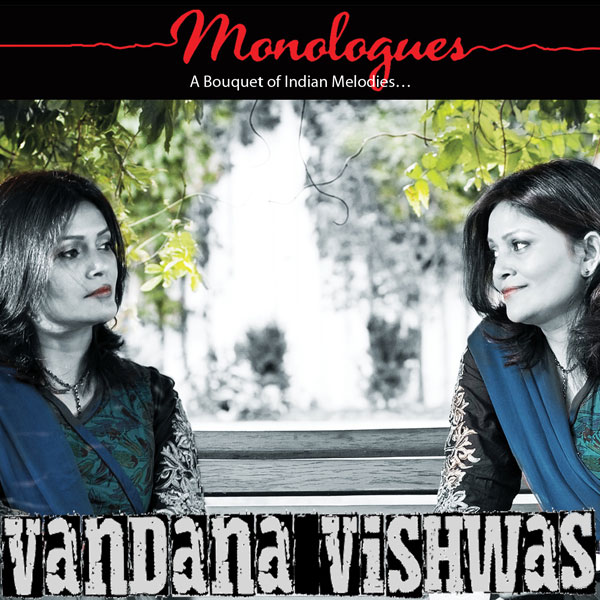
Something of a blend between ancient-wisdom -soaked traditionalist and blithe-spirit artistic rule-breaker,
Canadian singer-composer Vandana Vishwas lightly and very musically crosses and blurs the lines between Hindustani classical
composition to jazz to peachy and poignant love songs. Along with lyrical collaborations with her husband, lyricist-multi-instrumentalist
Vishwas Thoke, the crystalline-voiced Vishwas interprets ancient and modern India’s Urdu and Persian poetry in ear-pleasing but
subtly complex arrangements that reflect the Western and world musics that, when placed alongside or on top of the classical forms
of her native India, are reshaping her sense of self and suggest intriguing new musical hybrids for further exploration. On that note,
it is incredibly interesting to hear Indian music harmonized; the traditional forms are melodically based and do not employ chords as such.
Vishwas’ freethinking approach just sounds very, very different.
|
OANA CATALINA CHITU | Divine: Romanian Songs From the Repertoire of Maria Tanase (Asphalt Tango)

Maria Tanase (1913-1963) was a singer and interpreter of folk music who represented
Romania at the International Exhibition in Paris in 1937, as well as at the 1939 New York World's Fair. She also
served as a model for singer Florica in author Olivia Manning’s Balkan Trilogy: “When the applause died
out, she jerked forward in a bow, then, opening her mouth, heaved a high, violent gypsy howl. The audience
stirred. Harriet felt the sound pass like a shock down her spine” –– a warning to Manning’s British protagonists
that they had been plunged into a culture that is essentially and violently alien from theirs.
Tanase would come to be hailed as the “Voice of Romania,” but during
the country’s dark days under the pro-German Antonescu government, with its fascist majority, she was
banned from performing in public and her early recordings destroyed by the authorities. A line from Tanase’s song
"Lume, Lume” –– “World, world, sister world” –– with all its fatalism and underlying lust for life, wafts in the air in the
Communist-era Bucharest of Nobel laureate Herta Müller’s The Appointment, in turn inspiring art-rockers Liars’ album
title Sister World in 2010.
Oana Catalina Chitu, a Romanian-born singer now living in Berlin, is possessed of a warm and earthy voice that
does inspired justice to Tanase’s legacy. In Chitu’s Divine, Tanase’s repertoire is enhanced with thrilling
instrumental arrangements that blend the “Gypsy” strings with jazz. The iconic “Lume, Lume” is given an unexpectedly
wistful and romantic treatment, reflecting, perhaps, not the sinking world of prewar Bucharest, but of this world a
hundred years since Tanase’s birth. (Rika Ohara)
|
RODION G.A. | The Lost Tapes (Strut)
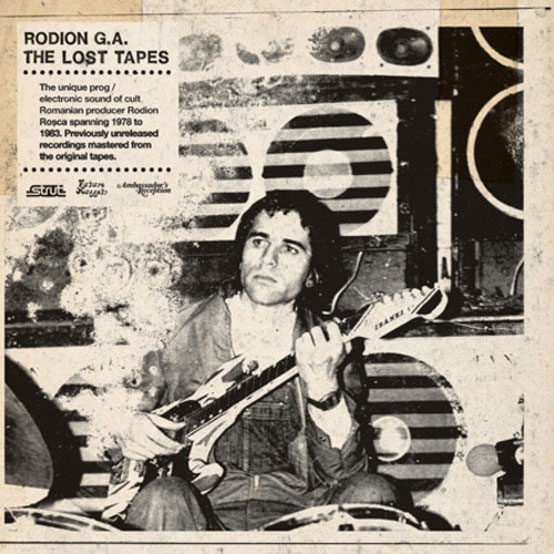
Heavy censorship plagued the arts in communist Romania circa late ‘70s-early '80s, forcing rock bands to make propaganda music or, worse, sappy pop sounds that didn’t rock the political boat. But teenaged Rodion did it anyway, bedroom-producing DIY ditties on creaky reel-to-reel recorders, guitars, toy synths, a rinkydink Soviet-made organ and an East German drum machine, all smeared out with fuzz/flanger pedals and other effects units. Weaving and mushing complex spirals of sound atop rough programmed rhythms and his multi-overdubbed voice, he devised idiosyncratically structured songs roughly akin to Jethro Tull jamming with Kraftwerk and Roky Erickson. Exhilarating!
|
IASOS | Celestial Soul Portraits series (Numero Group)

Iasos was and maybe still is a guy who lived on a houseboat in the Marin County docks, where in the mid-1970s he made music with some of the first commercially available synthesizers, along with magnetic tape manipulation, feedback and various electronic gizmology involving flute and other acoustic instruments (phase-shifting, echoplexing, etc.), and did cosmic live sets with apparently pioneering visual effects. Thing is, he all the while had this ongoing dialogue with one Vista, a good-hearted musicianlike being from a distant dimension (and that’s a fact). Iasos thus wasn’t a musician per se –– he was a channeler of Vista’s sound, being for the benefit of his fellow human beings here on planet Earth.
I was struck by a bit of hype pre-hearing this thing that, according to a doctor of psychology, Iasos’ music is similar to a musical sensation that people hear during near-death experiences. Naturally I said, Well, I gotta hear that. I did and was pleasantly surprised. Iasos’ intermediating of music from another dimension is not loopy-droopy and corny; contrarily, it’s intriguing, in its formal rigor and in some excellent mixing of melodious flute and vintage synth effects, and he has in particularly ace gift in the use of uncheesy harmony and melody, all coupled with a miraculous feeling for breathing, flowing floatspace. As this stuff’s recording actually predates all that New Age and ambient goopy goo, I wouldn’t want to stuff it into those genre bags, necessarily, but then its sheer beauty, and intelligent pure musicality, make me want to revisit some of that garbage, because I might’ve missed something I hadn’t heard before –– or was too big a snob to acknowledge.
The 2LP/CD compilation is a thing of beauty itself, featuring scads of previously unseen photos and a 4,000-word essay on the life and "crystal giggling energy" of Iasos.
|
BOYD RICE / NON | Back to Mono (Mute)
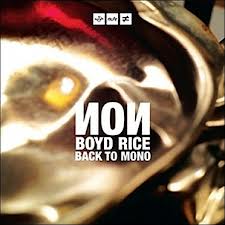
In or out of his Non de plume, musician/writer/provocateur Boyd Rice presents a most
interesting proposition, or dilemma, or something. Countless interviews, photo ops, song titles, books and live
performances have seen Rice buddying up in word and image with a litany of society’s most hated, feared and
contempt-strewn phenomena: Nazism, Satanism, skinhead “culture,” sado-masochism and the great American
White Flight up its own angry butthole. What Rice really is, or would like to think of himself as, is an art prankster,
deliberately (supposedly) baiting white liberals with the dankest furthest reaches of their own banal fears and barely
suppressed desires. Of course, this claim about Rice’s work’s artistic aims could be utter nonsense, and if something
smells like a dead fish, could be that that’s exactly what it is. Consider then the troubling but undeniable power –– the Riefenstahl effect –– of this particular sound artist’s music, whose dark industrial-electronic ambience is simply state of the art. It may compel you to look at yourself in the mirror, where you may or may not like what you see.
|
??? | Mad Music Inc. (Drag City)
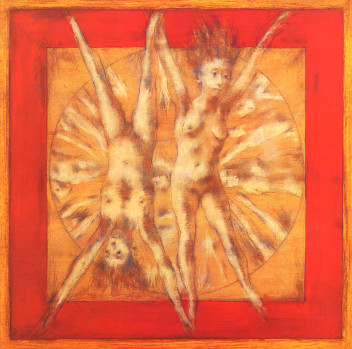
The identity of the artists who made this music some 30 years ago in Boston is “shrouded in
mystery,” but maybe it doesn’t matter who they were. And supposedly this album has been feverishly sought out
by record collectors for years and years, and…Well, the hype issued forth by Drag City comes off like typical Drag
City laff-riot PR hype (which is a higher-grade humor than most PR humor-hype, it should be noted), yet the fact is,
this music really is wonderful. A largely instrumental assortment of floaty, round-edged and veering slightly
pastel-y hybrids, it explores that sort of gratifyingly unbiased early-‘70s mixage of ambience, “tasty” jazz/lite funk
and post-hippie electronics/psychedelia in harps, flutes, acoustic piano and pleasing swathes of
vocalese. One is reminded of the earliest Soft Machine stuff, or (look for it) Eberhard Weber’s
Colors of Chloe on ECM.
Gently experimental, in other words, nice but not too nice, excellent daydream fodder.
|
KID KOALA | 12-Bit Blues (Ninja Tune)
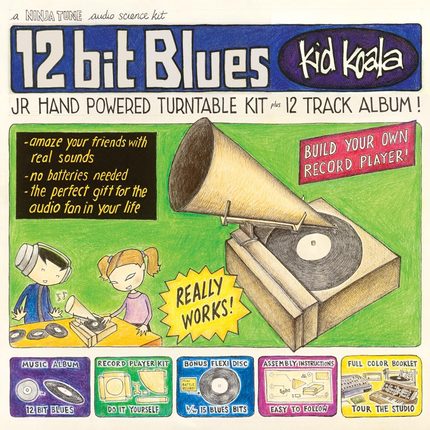
At this point it’s a bit beyond whether the contemporary DJ/electronic/digitalicist
has to bend over backward in order to show “respect” for the source material he’s drawing
his own new art from; the question is, How on Earth would he/she ever, ever show such “respect”
sufficiently? Some would say by leaving the originals the hell alone, not sampling them, not editing
them down into little bits and pieces, or stealing their best riffs and textures and words in order
to pile new stuff on top of it, to “contemporize” it or…Screw that: Kid Koala, the Montreal DJ, uses
prime dirty dusty Delta blues as an ideal canvas to stretch when he maximizes the grit with xtra
resonant bass, so this stuff just sounds good, real, real good; he seems to infer or draw out the
fine black humor in his ancient sources, too, and that makes his process intriguing –– real intriguing. Funny and funky, mostly, though.
|
LAVENDER DIAMOND | Incorruptible Heart (Paracadute)

There’s a romanticism-to-the-20th-power in Lavender
Diamond that can make the cynic squint the beady eyes. Yet the L.A.-based quartet’s
Incorruptible Heart (Paracadute) deals teary tales of heartbreak and loss even as the sheer
radiance of singer Becky Stark tells a different story, one about the redemptive power of creative
daring, perhaps. Tarted exquisitely up with strings, horns and the odd electronic touch,
these odes and laments are a smartly spacious brand of folk-pop that glows Specter-esque
widescreen to knife-edge intimate to frame Stark’s unusually corn-free vocal
wizardry and joyful ethereality. In fact, she’s a melodic force of nature whose pleasingly
quirky persona is so persuasive that she actually makes us want to sing, too…Better let
her handle that…
|
WOVENHAND | The Laughing Stalk (Sounds Familyre)
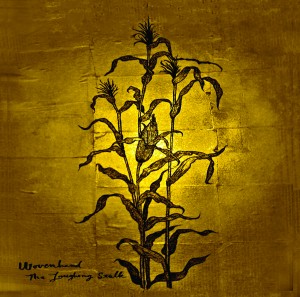
Wovenhand is ex-16 Horsepower mainman David Eugene Edwards' great
biblical-doom Americana band. The Laughing Stalk is, much like last year’s The Threshingfloor,
a troubling tome on spiritual hells and heavens, scripture as straitjacket, branding iron and only seeable way through when your back’s to the wall and your horses need feeding. With true drama, the charismatic Edwards disavows and proclaims, his faith denied, shattered, gathered and sown again and again and again. The musical backdrop is a craggy-peaked and wide-open-valleyed type sound, much like the landscape from which this strangely moving aesthetic comes; it is performed by a superb ensemble that includes Edwards on guitar, piano, banjo and vocals; Sir Charles French on guitar; Gregory Garcia on bass; Ordy Garrison on drums and Jeff Linsenmeier on organ.
|
THE SEA AND CAKE | Car Alarm (Thrill Jockey)
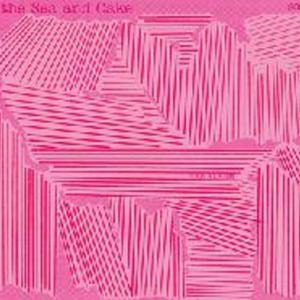
The Sea and Cake are the Steely Dan of indie-rock, crafting a breezy,
clean-lined pop that follows its catchy muse onto edgier, jazzier turf. The Chicago crew’s eighth album, Car Alarm (Thrill Jockey), is another sweetly modernist set of deliciously dreamy auras interlaced with gently experimental electronics, Brazilian-tinged harmonies and muscular but unobtrusive playing chops, courtesy Sam Prekop (guitar and vocals), Archer Prewitt (guitar), Tortoise’s John McEntire (drums) and Erik Claridge (bass).
|
THE ORB featuring LEE SCRATCH PERRY | The Orbserver in the Star House (The End/Cooking Vinyl)
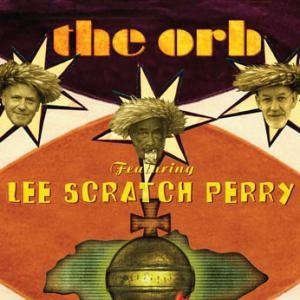
There’s real simpatico between the mixmeistering Orb and dub conqueror Lee Scratch Perry. An easygoing vibe pervades the kaleidoscopic beauty of these tracks, deepened by fly-in-the-ointment Scratch, the ageless sprite. He’s a cosmic joker, an elflike anarchist proclaiming funny shit like “I am the god of fire!” or enacting the title figure in “Man in the Moon.” The Orb’s dub/electronic textures are both massive and Chic-funk airy, painterly even in cuts like “Hold Me Upsetter,” “Congo” and the Orb classic “Little Fluffy Clouds” reworked as “Golden Clouds.” Radiating positivity without getting sappy about it, this is the sound of possibility.
|
SO PERCUSSION/GREY MCMURRAY | Where [we] Live (Cantaloupe)
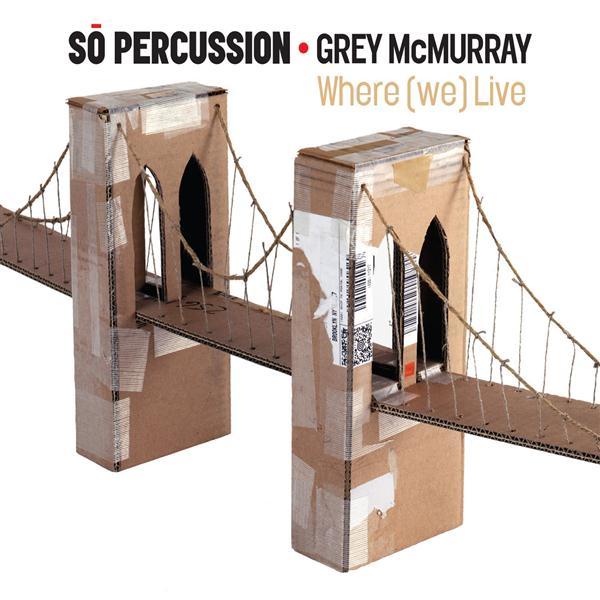
Guitarist-singer Grey McMurray and modernist drum corps So Percussion combine
forces in a non-genre-specific piece of art fairly exploding with odd blends of tones, textures,
rhythms and words. In an expansive musicality and wordplay that bears reference to Carla Bley and Paul Haines’
Escalator Over the Hill,
these new song shapes follow McMurray’s narrative obliquely and directly as it details the concept of home: fond and melancholy memories of childhood, sorting out where the “home” might be when we flee the nest.
It’s an intentionally lopsided structure, and in its way a briskly paced work, sparely though not minimally drawn in
an art-rock/new music/world music/post-post-postness.
This broad-beamed thing is quite hummable as well.
|
MATTHEW FRIEDBERGER | Matricidal Sons of Bitches (Thrill Jockey)
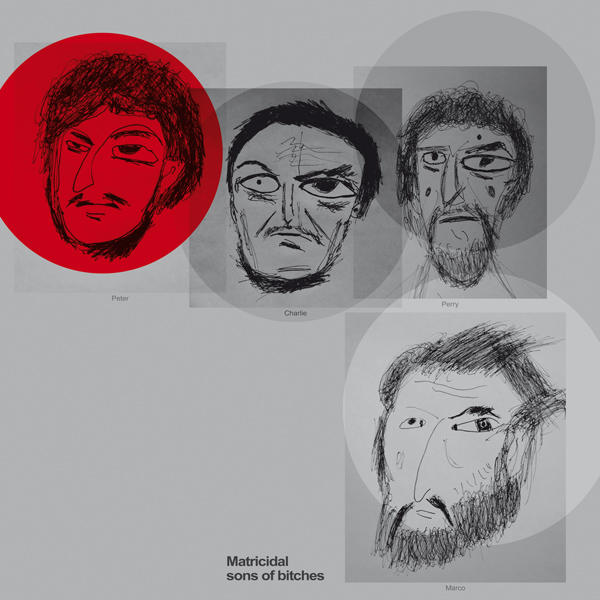
Matthew Friedberger, the brother half of Fiery Furnaces, is a popcraft
pointyhead with an unmatched gift for turning music inside-out, and tickling it on its chin.
This non-existent soundtrack for a planned non-filmed film rough-cuts
curious sounds from exotic locales for your head-skewing, toe-tapping pleasure, but more
likely Friedberger’s. And that’s why it’s got this weird depth to it, like it really does mean
something. You know, a lot of people use a jillion oddly juxtaposed samples and flavors
and textures and tell you to go ahead and make something of the result. Friedberger
does that too, only the obvious intelligence (is the word, maybe) of his particular
juxtapositions seem so wisely reasoned out (unclichéd); they are also gloriously musical.
|
LAWRENCE ARABIA | The Sparrow (Bella Union)
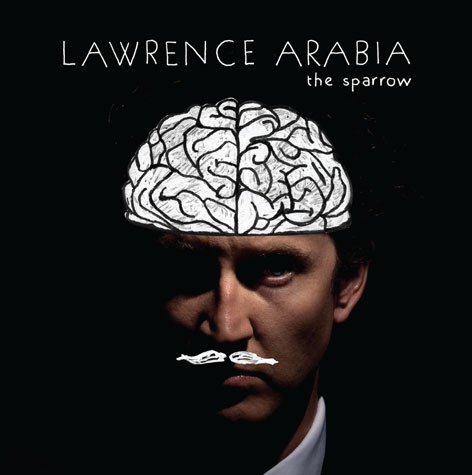
Lawrence Arabia is the pseudonym of Christchurch, New Zealand’s James Milne, who is among
several things the singer in Reduction Agents and a former member of the Brunettes and the Ruby Suns. He is a
songwriter/producer of prodigious and wonderfully idiosyncratic gifts, as evidenced by this recent solo album.
The Sparrow is a gorgeously crafted song suite delineating the outer and inner aspects of
what a pop song might possibly be, with Milne weaving minor-keys strewn under the shadow of perhaps Scott Walker and Serge Gainsbourg but more obviously John Lennon. The Sparrow is a tersely defined work with a subtle lushness of emotion, and it’s drily witty stuff as well. Yet with its overarching theme of dashed hopes and fading dreams, songs like “Travelling Shoes” and "The 03" might make you want to say ouch…
|
SAM RIVERS | Reunion: Live in New York (Pi Recordings)
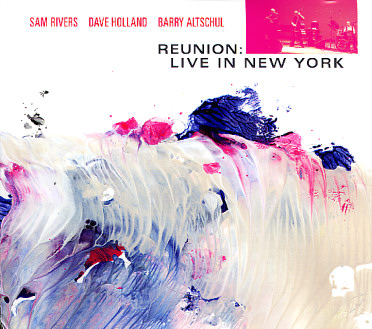
Jazz multi-instrumentalist Sam Rivers died at the somewhat ripe old age of 88 in December 2011, and most likely a lot of people didn’t even know or care about it. Old story of life here in America. But, look, Sam Rivers was a giant, and a man who just never did get the major props he deserved. Props for what? What’d he do? A lot of things: That’s what Sam Rivers liked to do, in the context of a “free” jazz of his own invention that threw in a lot of non-“free” stuff drawn from blues, Euro classical, flamenco and whatever else crossed his mind and his heart. Much of the time Sam Rivers was saying there is freedom in both lyricism and abstraction, that one has just got to know when and where to use them, and what they both imply. With these kinds of
ideas, Rivers resided outside the normal frameworks of the jazz “times,” basically, where otherwise a modern
musician simply had to choose between such lyrical beauty and your tough-guy atonal/freakyscreechy
“innovation.” Rivers is best known for his work in a trio with bassist Dave Holland and drummer
Barry Altschul, a band that toured a lot but didn’t record much. Here now is this re-release of the 2007
Reunion: Live in New York, which finds Rivers playing his tail off at age 83 with his two
soul mates in wide-ranging and clear-headed free-improv sets that create a vivid sense of
architecture, for one thing, but even better, fascinating new approaches to musical storytelling.
|
REDD KROSS | Researching the Blues (Merge)
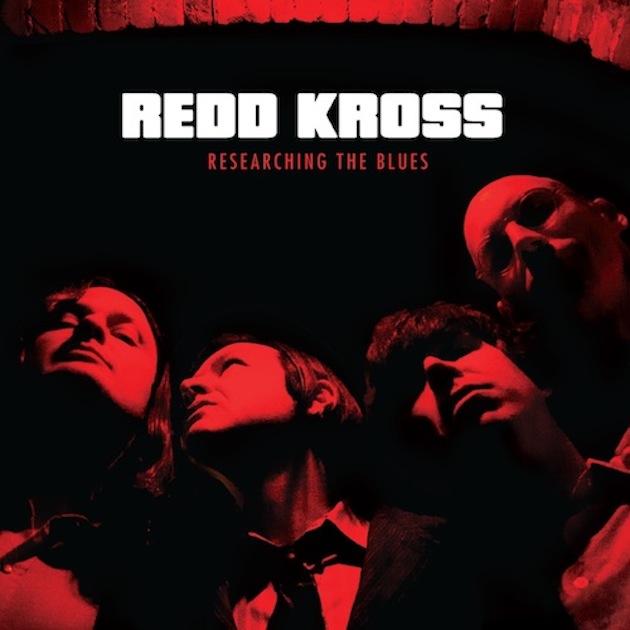
On their first new album in 15 years. Redd Kross bros Jeff and Steven McDonald bring their trademarked blend of hard-rocking trash ‘n’ roll/English Invasion melodic flair. Choice tunesmithery abounds on the title track and goodies like “Stay Away From Downtown,” “Meet Frankenstein” and “Winter Blues” show that you can mess with the rock any way you feel if you’re writing great songs. RK prove that all night in Beatleish (you might say Cheap Trickish) hummables that wend their winning way through rough & ready rifferama, delivered supertight and, well, not mean –– even when Redd Kross are acting so tuffbutt they’re doing it with a grin, making these artfully crafted songs sound like they’re just bashing ‘em out. Not true!
|
JETHRO TULL | TAAB2 (Capitol/EMI)
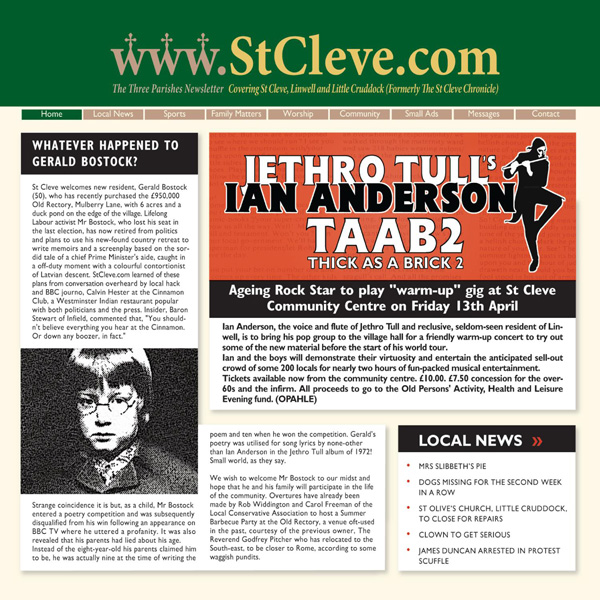
Ian Anderson celebrates the 40th anniversary of Tull’s progressive-rock classic Thick As A Brick with a sequal to the story of protagonist schoolboy Gerald Bostock, now 50 years old, for cryin’ out loud. You might recall that the convoluted plot of the original was a bit hard to follow though not crucial to the music’s appeal. Likewise TAAB 2, and no matter: Does it twist and turn through many many episodic bits featuring intricate flute-organ-guitar interplay atop devilishly complicated theme/development and tricky time-signature whiplashery? Yes! While the avuncular Anderson’s vocals have mellowed considerably, Tull fans will get a charge out of the sequal’s old-school proggy charms.
|
HECUBA | Modern (Germ)

Two people, alone together: L.A. electronic/other-pop pair Hecuba’s new album
is, like their previous way-acclaimed Paradise album on the Manimal Vinyl label, a strange and
unsettling thing. They create a brutally/beautifully minimalist electro- | arty sound and place with enormous emotional impact, an impact that comes by way of the most artfully distanced and obliquely moving “pop” music, so very postmodern and intellectualized.
The Modern album explores the couple’s relationship as lovers/collaborators/friends; there’s an almost unbearable tension in these tracks as they fret/fuss/anguish and celebrate their blurring of identities, losing their selves in the process. The album is a contemporary take on those classic Lee Hazelwood/Nancy Sinatra tracks where each tells his/her side of the story, and it’s cruel, it’s vicious, it’s forlorn and it’s ever so slightly funny. And it’s embarrassing to witness, a testament to the depth and execution of its concept.
Hecuba do all this with high intelligence, not to mention advanced musical artistry. As they expose themselves to us in musical and lyrical tones of shocked numbness and suppressed anger, all these wormy synth squiggles/bleeps traverse far more complex emotional minefields. Brutally spare beats and synth textures turn to mocking sour whines in short-shock tracks like “Dancing” (“I don’t care about dancing anymore | I don’t care about you anymore”), “Faith” (“Give me all your faith | Give me all your devotion | body | abandon…You’ll never be lonely”) and “Modern” (“I got beat up but I’m laughing now”). The doo-woppy “Turn Out the Lights I” shows off the well-produced cleanness of the duo’s suggestively voluminous sound and unconventional synth textures, which often play like particularly irksome flys in the ointment.
That sheer musicality is most interesting on “Turn Out the Lights II”, where dissonant hornish samples interweave a piano perhaps like the couple’s matrixlike relationship as each acknowledges the need for the other (“Where do you go when I turn out the light | that’s what I want to know | In the dark I can’t see the light”). Especially resonant synth textures and old-school beat box rhythms adorn the closing “Crime, Violence” (“It comes in waves…” “It’s over between us”), suggesting of course not just an objection to being pushed around, but the overall immensity of the situation.
|
ERALDO BERNOCCHI, HAROLD BUDD, ROBIN GUTHRIE | Winter Garden (RareNoise)
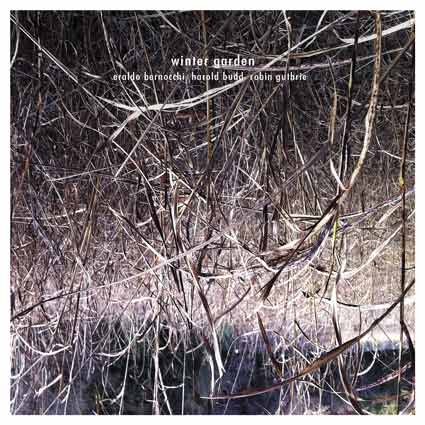
It was wise old John Cale who issued the warning: “Reverb is the opiate of the incompetent musician.” Generally speaking, that’s very true. But these guys use digital delay as a whole ‘nother instrument, and it’d be merely grouchy to deny the
beauty of the results. Guitarist/sound designer Bernocchi, pianist Budd and Cocteau Twins guitarist Guthrie revisit/remodel New Age/ambient realms with an apparent aim to make it more substantial, with hope capable of expressing
something beyond mere bliss or non-attachment. “Don’t Go Where I Can’t Find You” is surprisingly sentimental, even, the way it drowns us in reverb: defiantly slow and measured, “Losing My Breath”’s loonnnggg piano delays demand
patience, acceptance.
Harmonically major throughout, thus easy on the ears and mind, this music concerns itself with mental space, catharsis maybe, emptying out. That its mostly short pieces of piano
and guitar cascades, waves, washes retain their intrigue is largely due to the musicians’ deft trading-off between each other’s instruments via some particularly awesome delay FX. The title track adds bass pulse and involves a
minimal shifting of chords for a bit more constructed effect. Dashed with darkness, the wonder and awe of “Harmony and the Play of Light” is stabbed with church-bell-like clanging chords, which peel out like the realization of a scar that will never mend.
Is there variety? Not as such, but that’s not the issue,
really. In fact, there’s a refreshingly large lack of issue involved in this Zenlike music.
And it’s a memories-trigger –– for things one has yet to experience.
|
AARON FREEMAN | Marvelous Clouds (Partisan)
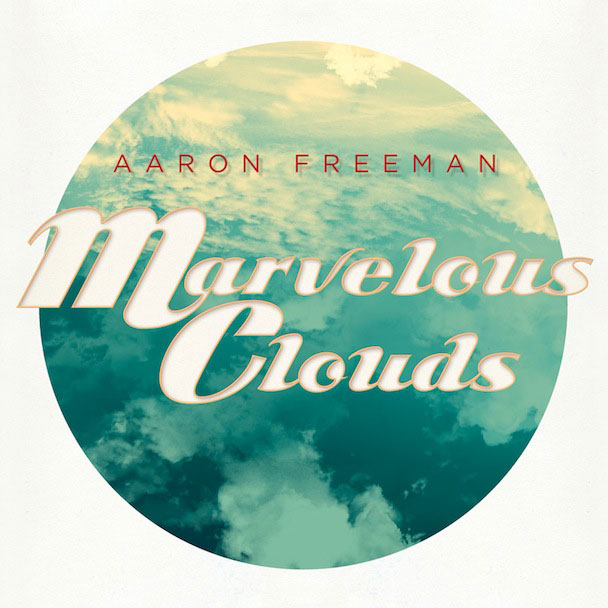
Irony? Try to define it anymore. Aaron Freeman, a.k.a. Gene Ween of Ween, sings the Rod McKuen song/poem book, and it’s not excruciating. And why do I need to qualify it like that? Because McKuen, America’s most famous poet, never got no respect whatsoever, I mean he has traditionally been howlingly derided by beatniks and hipster types as a shallow sentimentalist who basically penned Hallmark greeting cards of drivel doggeral with far too plainspoken feelings. And it’s true, much of McKuen’s stuff was humorously, well, simplistic. But Freeman’s got his reasons for taking his cues from McKuen, seemingly as a means to clean up his own act, to start afresh as a human being who can express real, true feelings like everything isn’t just a big fucking joke –– like maybe Rod McKuen wasn’t such a pinhead after all.
Anyway, everyone will assume that slacker dude Freeman is being “ironic,” and whether he is or isn’t –– I mean, by this time ironic/not ironic, it’s so melted down in our psyches, and why should Freeman be any exception? Just remember that the sarc-y Ween was just as often making finely crafted music as they were slyly cracking wise. So Freeman’s takes on tracks like “As I Love My Own” (“And I love your hair | as I love my own”) come on like super-pleasant pop-rock, dressed in harp sounds, twinkly synths, sure, and deep within its DNA a modernistic driving minimalism.
Basically it’s all about how songs and poems might divulge new dimensions when they’re performed in new and different ways, often revealing a previously unheard wisdom or at least worthiness of some sort. But then, part of the fun of Freeman’s genuinely lovely record is puzzling out the depths of your own irony as you shrewdly inspect the sincerity of his mind and heart through your misting-up eyes. The thoughtful “A Man Alone” bears not a trace of sneer: “Memories of midnights that fell apart at dawn…” You remember Bobby Goldsboro’s “Jean”? It was simple and dignified, in retrospect –– and all the tough guys laughed at it. Freeman’s version is even simpler and more dignified; it’s fucking stately. Meanwhile the title track’s gunfire intro and excellent widescreen instrumental arrangements are fantastically peppy and adventuresome. Best of all: Like an undeservedly obscure rock gem from the ‘70s, “The Beautiful Strangers”’ has a nifty harpsichord intro, plodding L.A.-studio beats and chords, and a rather spectacular Dave Gilmourish guitar solo.
“Good” job, Aaron Freeman. Seriously.
|
DROKK | Music Inspired by Mega-City One (Invada)
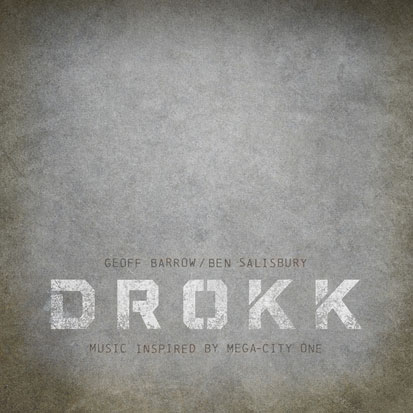
Geoff Barrow of Portishead and film composer/producer/Invada label owner Ben Salisbury do
extremely minimal electronic music inspired by the 2000AD comix series (Judge Dredd), whose noirish megalopolis and moody danger and intrigue seemed to require, according the Barrow and Salisbury, something other than the usual big-orchestra lushness usually strewn all over most contemporary film scores. Tracks such as “Lawmaster/Pursuit” and “Helmet Theme” boast shimmering, snaking synths and pulsing sequencers ą la Giorgio Moroder, highly suitable at least for a chase scene. Other tracks like “Titan Bound” offer a tasty tension of slow, turning, simple synth notes and very slooow electronic pulsing; along with a pretty good Can/Neu rip (it’s motorik, don’t you know), there’s a lot of very low-frequency throb throughout, whose mere resonance is hugely satisfying. Most of the tracks were created on the Oberheim 2 Voice Synthesizer from 1975, with its onboard sequencer used to create rhythm and drum sounds. It’s hard to imagine this music’s staying power, as unfortunately none of it is particularly musical, and at times it comes off curiously amateurish. It is however a quasi-interesting visit with two guys messing around with vintage synths and letting the sequencers run amok.
|
|
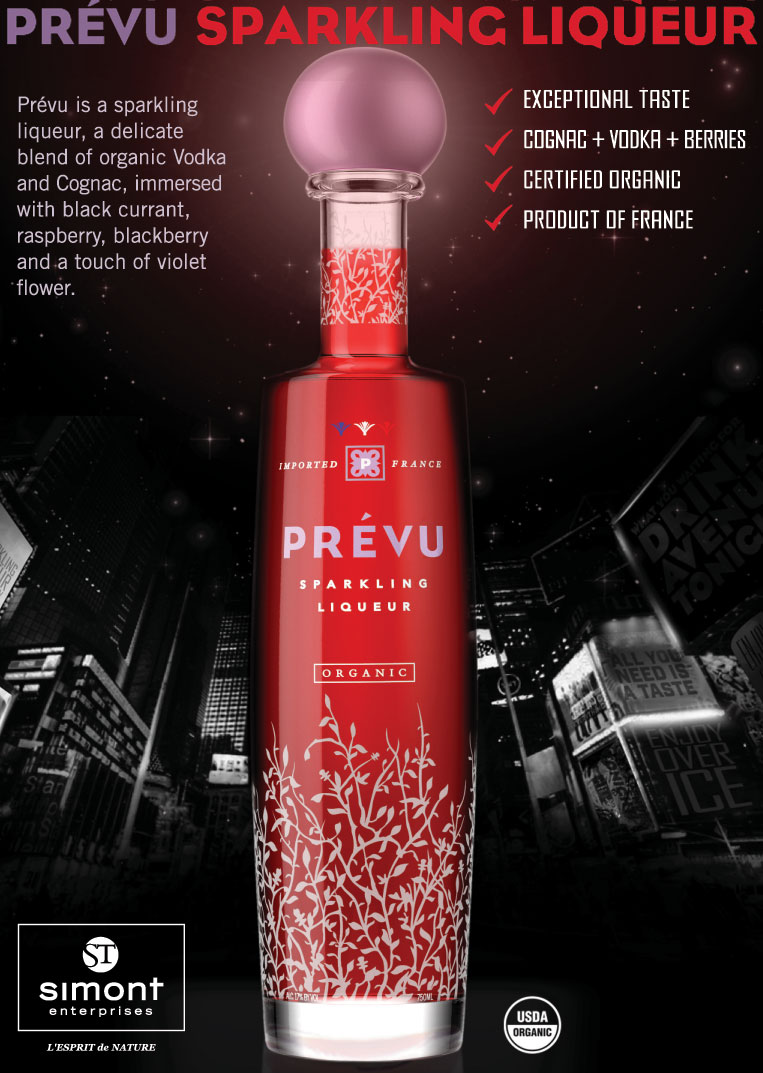
Subscribe to our newsletter!
|